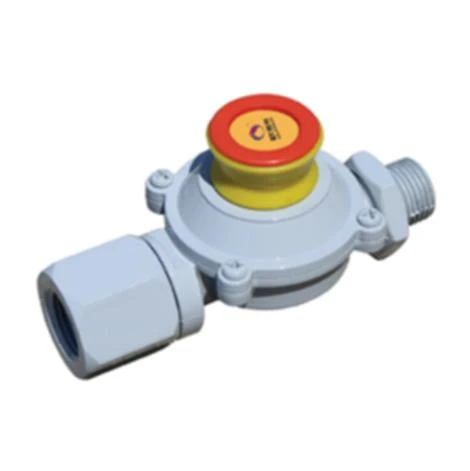
Dec . 14, 2024 05:28
Back to list
Gas Pressure Regulator System for Optimal Performance and Efficiency
Understanding Gas Regulators Their Role and Importance
Gas regulators are essential devices used in various applications to maintain the pressure of gases at a desired level. They play a crucial role in ensuring the safety and efficiency of gas systems, whether in industrial settings, residential heating, or laboratory environments. This article delves into the function, types, and significance of gas regulators.
What is a Gas Regulator?
A gas regulator is a mechanical device that reduces the pressure of gas from a high-pressure source to a lower, more manageable level. In many applications, gases are supplied at high pressures from cylinders or pipelines. Without a means to control this pressure, the gas may not be usable for its intended application, and it can pose safety risks.
Gas regulators operate using a simple principle they utilize a diaphragm to sense the outlet pressure and adjust the flow of gas accordingly. When the outlet pressure rises above the setpoint, the diaphragm moves to decrease the gas flow. Conversely, if the pressure drops, the regulator allows more gas to flow through, ensuring a steady supply.
Types of Gas Regulators
There are several types of gas regulators, classified based on their design, application, and pressure regulation capabilities.
1. Single-Stage Regulators These are simple and cost-effective devices that reduce high-pressure gas to a lower pressure in one step. They are ideal for applications where precise pressure regulation is not critical.
.
3. High-Pressure Regulators Designed for applications involving high inlet pressures, these regulators safely reduce gas pressure for use in various processes, such as welding or industrial machinery.
منظم ضغط الغاز

4. Low-Pressure Regulators Often used in residential gas appliances, these regulators manage the pressure for safe operation of devices such as stoves, heaters, and water heaters.
Importance of Gas Regulators
Gas regulators are vital for several reasons
- Safety By controlling gas pressure, regulators help prevent leaks and explosions that can occur when gas is supplied at excessively high pressures.
- Efficiency They ensure that systems operate within their optimal pressure ranges, which can lead to improved efficiency and reduced energy consumption.
- Equipment Protection By stabilizing inlet pressure, regulators protect sensitive equipment from damage caused by pressure fluctuations.
- Versatility Gas regulators are used in a wide array of applications, from home heating to industrial processes, demonstrating their adaptability and importance across various sectors.
Conclusion
In summary, gas regulators are critical components in the management of gas systems. They provide essential pressure control, enhancing safety, efficiency, and equipment longevity. Understanding their function and types can help users select the right regulator for their specific needs, ensuring safe and effective operation in any gas-related application. As gas technology continues to evolve, the significance of these devices will only grow, making it imperative for industry professionals and everyday users alike to appreciate their role in the safe handling of gases.
Latest news
-
Safety Valve Spring-Loaded Design Overpressure ProtectionNewsJul.25,2025
-
Precision Voltage Regulator AC5 Accuracy Grade PerformanceNewsJul.25,2025
-
Natural Gas Pressure Regulating Skid Industrial Pipeline ApplicationsNewsJul.25,2025
-
Natural Gas Filter Stainless Steel Mesh Element DesignNewsJul.25,2025
-
Gas Pressure Regulator Valve Direct-Acting Spring-Loaded DesignNewsJul.25,2025
-
Decompression Equipment Multi-Stage Heat Exchange System DesignNewsJul.25,2025

